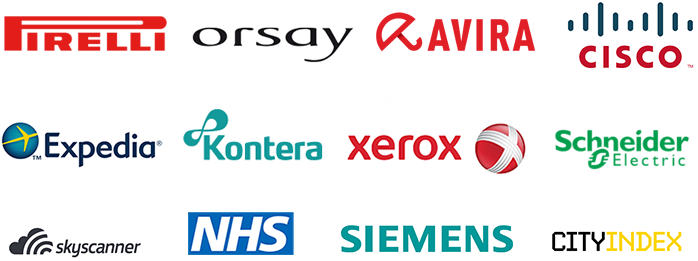Kanban and Scrum are popular frameworks within Agile software development, designed to improve efficiency and enhance workflow. While they have similarities, each offers a unique approach and benefits. Understanding their differences and strengths can help you choose the best method to manage your project, but whichever you settle on, you can be sure that your team will find their task management experience much improved.

What is Kanban?
Kanban manages workflow by visualizing all work split by its current completion status, breaking the project into smaller deliverables, and limiting the number of things in progress. It emphasizes viewing software development as a holistic system, focusing on gradual and continuous improvement.

Core Principles of Kanban:
- Visualize the Workflow: Use visual boards to represent work items and their progress.
- Limit Work in Progress (WIP): Restrict the number of tasks in progress to enhance focus and efficiency.
- Define flow policies: Make it clear when cards can be moved to specific stages.
- Manage the Flow: Monitor the columns for piling up tasks and tasks becoming flow blockers.
- Improve continuously: Spot improvement opportunities and implement changes as you go.
These principles create an open, flexible platform that can be adapted to various environments, making Kanban suitable for organizational levels going beyond just software development.
What is Scrum?

Scrum is an iterative, incremental framework often used for complex projects. It involves dividing work into fixed-length iterations called sprints, usually lasting two to four weeks. Scrum teams commit to delivering a shippable product version with each iteration.
Key Features of Scrum:
- Time-boxed Iterations: Work is divided into sprints with fixed durations.
- Cross-functional Teams: Teams are self-organizing and include all necessary skills.
- A Set of Planned Meetings: Daily stand-up, sprint planning, and sprint Retrospectives keep everyone in the loop, speed up problem-solving, and allow the team to learn from experience.
- Burn-down Charts: Visual tools used to track progress and remaining work.
- Prescribed Team Roles: Scrum asks teams to name a product owner to represent the customer's needs and manage the backlog, a scrum master to keep the process and the development team's approach true to Scrum principles.
Given the specific rules guiding a Scrum workflow, it is best suited for complex software development and isn't often used for other purposes. Although the prescribed roles and ceremonies may make it seem limited, its well-thought-out structure is its strength.
Similarities Between Kanban and Scrum
Despite the perceived differences, Kanban and Scrum have several common traits:
- Both are part of the lean and agile midset.
- Both limit work in progress to prevent overload.
- Both use pull scheduling to manage tasks.
- Both require breaking down work into manageable pieces.
- Both rely on organized, collaborative teams.
- Both aim to create usable, high-quality software.
- Both emphasize transparency to drive continuous improvement.
Key Differences
Between Kanban and Scrum
Change Management:
- Scrum: Possible with each sprint start, though frequent changes can signal poor understanding of the customer needs.
- Kanban: Allowed at any time due to the non-prescriptive character of the method.
Team Structure:
- Scrum: Requires cross-functional teams with a few preset roles.
- Kanban: Does not prescribe specific team structures, allowing any team member to manage and alter the process board.
Work Pace:
- Scrum: The team focuses on the single Sprint event, determining a high work cadence and speedy feedback cycle.
- Kanban: Supports continuous flow of work, without defined start and finish, allowing to make improvement-focused process changes at any time.
Flexibility:
- Scrum: Prescriptive with defined roles, ceremonies, and artifacts. Best suited to software development.
- Kanban: Highly adaptable, allowing teams to tweak processes as needed. Suited to any work that follows distinct process stages.
Progress Tracking:
- Scrum: Employs burn-down charts for each sprint.
- Kanban: Does not mandate specific charts but often employs lead & cycle time and cumulative flow charts.
Work Planning:
- Scrum: Uses sprint planning to limit WIP indirectly.
- Kanban: Directly limits WIP based on workflow state.
Summing Up
Choosing between Kanban and Scrum depends on the nature and requirements of your project:
Kanban: Ideal for lightweight, flexible projects, emphasizing continuous improvement. It allows project owners to prioritize feature requests and interact closely with the development team, fostering better understanding and collaboration.
Scrum: Suited for complex, long-term projects that benefit from structured, time-boxed iterations and cross-functional teamwork. It focuses on delivering incremental improvements through well-defined processes and ceremonies.
Ultimately, your decision should be based on which framework aligns best with your team's dynamics and the project's goals, ensuring the highest value for your customer.
Selecting Online Tools
Whether your project will benefit from Scrum or Kanban, try adopting a web-based project management system that will aid that framework while remaining easy to use. Consider trying Kanban Tool - despite having been developed in mind with Kanban, the service's flexibility makes it perfectly able to support Scrum processes too. Design your custom workflow, assign your WIP limits, and get to work as a team.
Beyond catering to Kanban and Scrum alike, the Kanban Tool service offers numerous other perks and helpers for your teamwork planning, execution, and monitoring. It features fully customizable project boards with swimlane support, allowing you to tailor the boards to fit your specific workflow type and to alter them mid-project. Custom fields are available for holding in-card information crucial to your unique operations.
The service also provides granular access management, enabling you to share individual project boards exclusively with the team members working on them. With the Team and Enterprise service plans, you can create unlimited boards, cards, and file attachments. Additionally, over 30 free power-ups can be activated on demand to add specific functionalities to given boards. The power-up examples include Recurring Tasks, Card Covers, Task Summary, Developer Tools, Task Dependencies, and an AI Assistant.
Process automation is another valuable feature, allowing you to automate foreseeable actions on the boards, saving time and effort. For teams that require non-cloud data hosting, there is the option to host kanbantool.com on your company server. Furthermore, API/SDK access is available for building custom integrations and modifying task processing to meet your team’s unique needs.






